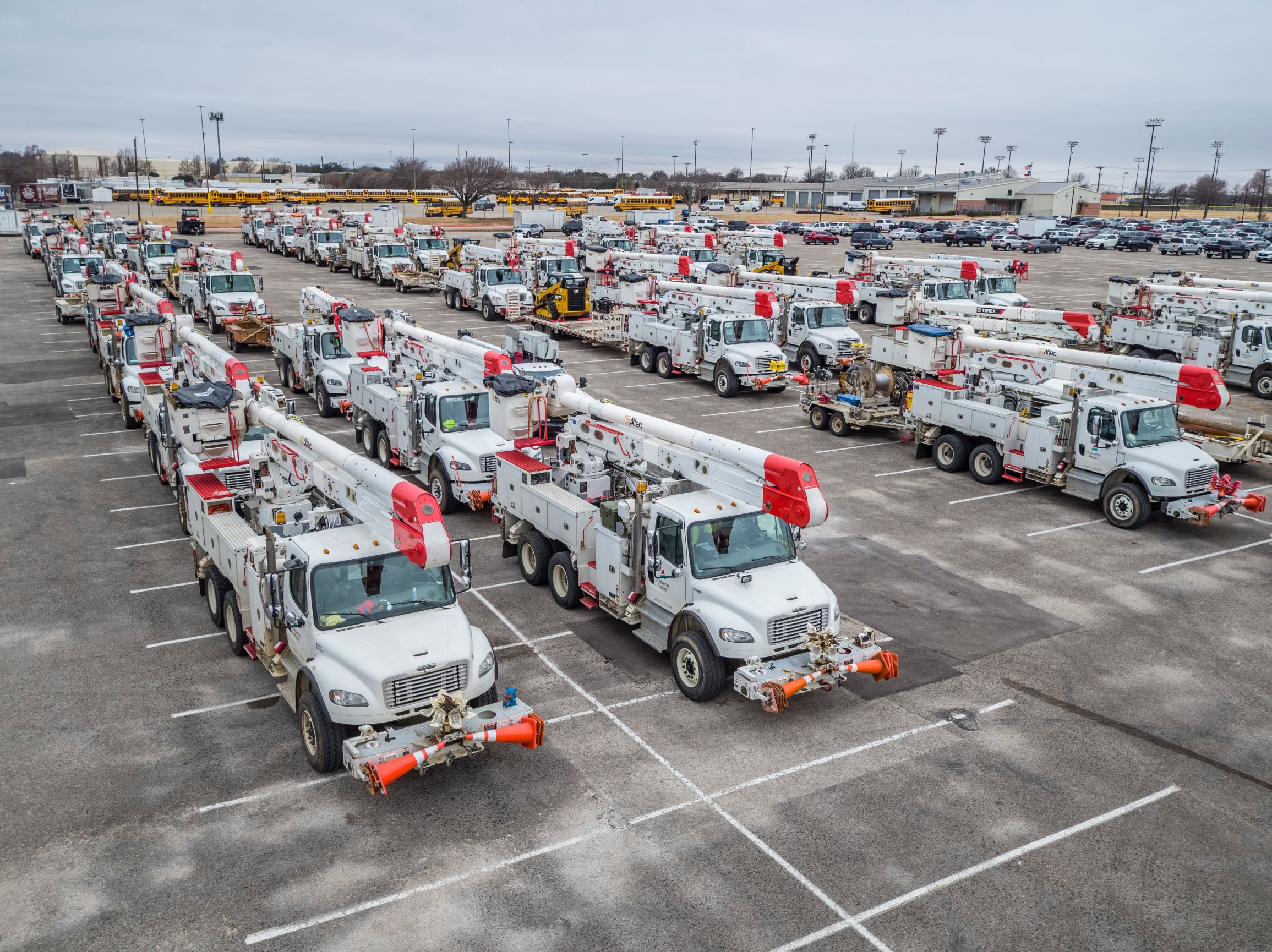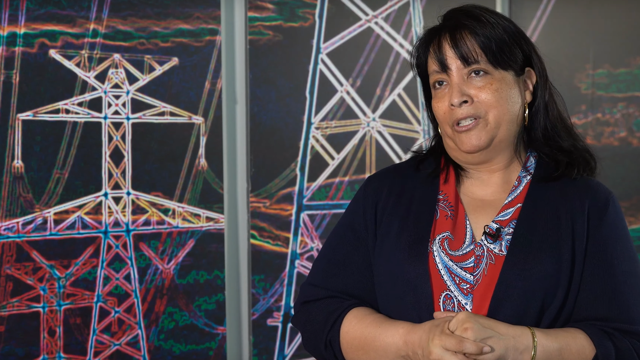-
Contact Us
-
General Inquiries/Service Requests:
- 888.313.6862
-
contactcenter@oncor.com
-
(Mon.-Fri., 8 a.m.-6 p.m. Central Time)
-
For Outages
- 888.313.4747
-
(24/7)
When fighter jets scramble or missiles launch, North Texas becomes an important part of the country’s arsenal.
The same Oncor-delivered energy that powers your home or business also helps Lockheed Martin run a number of Dallas/Fort Worth-area facilities, chiefly the company’s Aeronautics headquarters at Air Force Plant 4 in Fort Worth and its Missiles and Fire Control plant in Grand Prairie.
“We’re in our 75th year here in Fort Worth, and we support not only the U.S. military, but also our allies around the world,” said Aeronautics Director of Facilities and Plant Engineering Stephen Ehrlicher, a 32-year Lockheed Martin veteran. “We take a lot of pride in what we produce. It keeps us safe and free. The culture of service to our nation is pretty evident in the technology we’ve developed right here in Texas, and that commitment to service goes beyond the military. It goes into the community.”
With a total of more than 17,000 employees across the Dallas-Fort Worth area, Lockheed Martin employees volunteered more than 113,000 hours in community activities in 2017 and made local charitable donations of more than $1.5 million.
And then there’s the electricity. The Fort Worth Aeronautics facility alone has a peak demand of about 40 megawatts, or enough to power between 26,000 and 35,000 homes, and dips as low as about 15 megawatts on Christmas Day.
Oncor’s corporate predecessor, the Texas Electric Service Company (TESCO), was there providing electricity when the aeronautics plant opened in 1941. Still owned by the Air Force but under Lockheed Martin’s operational control, the plant has been a customer every day since.
One of the biggest uses of electricity in prepping new jets for the flight line might surprise you. “Our paint operation is one of our most energy-consuming activities,” Ehrlicher says. “If you’re doing that on a nice hot Texas day, it takes a lot of cooling.”

Nationwide, Lockheed Martin’s total Aeronautics operation covers some 22.4 million square feet in nine North American facilities including the major sites in Marietta, Georgia and Palmdale, California. If you combined all those facilities into one square, the space enclosed would be almost a mile on a side. At the Fort Worth Aeronautics headquarters, 7.8 million square feet of manufacturing space – equal to more than 135 football fields – sit on 761 acres and about 14,900 people report to work each morning. Ehrlicher’s team of facility professionals, are responsible for keeping the various Aeronautics plants in 24/7 state of operational readiness to enable the various program missions.
On most days, Lockheed Martin is like any other energy customer – albeit one whose advanced meter logs more kilowatts than the average homeowner’s. But because its operations are so critical, the company places a premium on the reliability of that energy. "We rely heavily on Oncor," Ehrlicher says. "We have unique needs to build our products and require reliable commercial power."
We rely heavily on Oncor. We have unique needs to build our products and require reliable commercial power.
- Stephen Ehrlicher, Lockheed Martin's Aeronautics Director
Oncor Account Manager Phillip Harbour says even though that standard—reliability—sounds simple, it’s a vital mission.
“Our partnership is to provide them with safe, reliable power,” said Harbour. “If we don’t, it costs the taxpayer, because they may lose product and have to remake it. Even a short outage can cost them an entire week’s worth of a paint job on an F-16 or an F-35.”
At other times, Lockheed Martin and Oncor work together to address the special infrastructure needs that go along with using so much electricity. Although Harbour is the primary contact person for Lockheed Martin, the two companies work closely together to keep multiple channels of communication open and get things done.
“With customers like Lockheed Martin, we’re more layered, peer-to-peer,” Harbour said. “It’s a company-wide relationship, and each peer has someone they can call.” That makes it possible to collaborate on complex projects.
In 2016, for example, teams from the two organizations installed a new 69 KV switch that would help the manufacturer ramp up its rate of production and continue updating its decades-old physical plant. The need wouldn’t really arise until 2017, but thanks to what Ehrlicher called “outstanding coordination between Oncor and Lockheed Martin,” it was in place about a year in advance when an outage was less taxing on our production line.
The company also collaborates with Oncor to drive energy reduction efforts in all its locations, including new facilities.
“Right now we’re doing a very extensive building campaign, to build a greater number of airplanes per year and every project is design to ensure we are as energy efficient as possible,” Ehrlicher said. “Along with this building campaign, we are also We're changing out all the lighting in our main manufacturing plant to LED lighting.” The retro-fit, which comprises thousands of fixtures, will save energy not only on lighting, but also on cooling needs.
For Harbour and his Oncor colleagues, it isn’t “all in a day’s work.” It’s something more. “I believe we should have a secure nation, and they provide that in a lot of ways,” Harbour said. “I’m very happy to be a part of that.”








